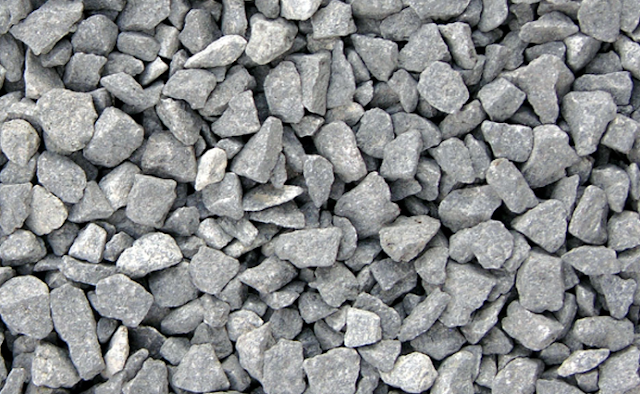Aggregate, in building and construction, material used for mixing with cement, bitumen, lime, gypsum, or other adhesive to form concrete or mortar. The aggregate gives volume, stability, resistance to wear or erosion, and other desired physical properties to the finished product. Commonly used aggregates include sand, crushed or broken stone, gravel (pebbles), broken blast-furnace slag, boiler ashes (clinkers), burned shale, and burned clay. Fine aggregate usually consists of sand, crushed stone, or crushed slag screenings; coarse aggregate consists of gravel (pebbles), fragments of broken stone, slag, and other coarse substances. Fine aggregate is used in making thin concrete slabs or other structural members and where a smooth surface is desired; coarse aggregate is used for more massive members.
The influence of the aggregate upon its bulking characteristics when damp
Bulking depends upon the percentage of moisture content and the particle size of the fine aggregate. Bulking increases with the increase in the moisture content up to a certain limit. When damp, finer aggregates bulk more. On the other hand, less finer aggregates or coarse aggregates absorb less water than the fine aggregates, and so, coarse aggregates bulk less. Thus fineness of the aggregates influences its bulking characteristics when damp.
The effect of damp aggregate upon the mixture proportion
When aggregate is damp, all the pores are completely filled with water and the surface of the aggregates contain free water. Aggregates in a stockpile will mostly be in this condition, meaning additional water will be added to the mix unless proper adjustments are made to the aggregate and water batch weights. Aggregate mixture proportion are developed using either the oven-dry or saturated surface dry condition.
Difficulties that arise in the use of aggregates which absorb water and how they overcome (a) in the laboratory and (b) on the job.
The aggregates absorb water in concrete and affect concrete’s water-cement ratio, the workability and final volume of concrete for extra water absorption that hampers the quality of concrete.
In the laboratory, aggregates are in SSD condition which is free from moisture. For that reason, specific amount of excessive water is needed to be added.
(b)If air-dry absorption aggregates are being batched on the job site, the amount of water added at the work site must be increased to maintain the desired concrete slump and water-cement ratio. If the worksite operation doesn’t make this batching adjustment, the concrete can loose slump as aggregates absorb water. This is more likely when aggregate absorption exceeds 1%.


The representation of this message is actually exceptional Boardwalk Systems. I believe this is useful and a short explanatory article for everyone. I also value this development; I appreciate you for sharing a similar review.
ردحذفFor landscape and building supplies in Sydney, THE YARD serves from the smallest garden renovation to the large commercial building projects, our skilled staff are trained in an expert way and they are totally committed to give you superior service.
ردحذفLandscape Supplies Sydney!